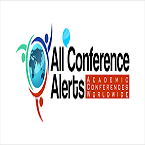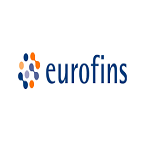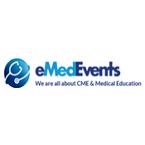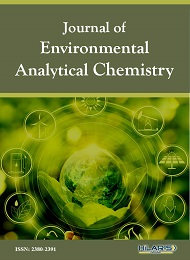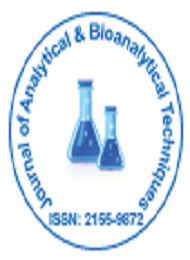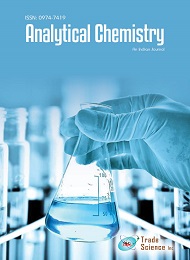Theme: Shaping the destiny with new studies in analytical chemistry
ANALYTICA ACTA 2023
- ABOUT CONFERENCE
- WHY TO ATTEND
- SESSIONS & TRACKS
- MARKET ANALYSIS
- Abstract Submission Criteria & Eligibility
- Participation / Presentation option
The 24th Global Summit on Analytical and Bioanalytical Techniques will be held in Paris on July 19 and 20, 2023. France. Keynote speeches, oral presentations, poster presentations, and exhibitions will also be held in a timely manner. The subject matter of the convention is "shaping the destiny with new studies in analytical chemistry". It provides a platform for the critical analysis of new data, expands the reach of analytical chemists, and exchanges the latest research findings and results on all aspects of bioanalytical and analytical techniques.
The Analytical Conference offers research papers on analytical chemistry expertise from a variety of scientific backgrounds and is open to young researchers and students. The main purpose of the Analytical Techniques Conference is to spread knowledge about analytical and bioanalytical techniques, chromatography, separation techniques, mass spectroscopy, spectroscopy, and spectrometry. With research in both pharmaceutical and life sciences, Analytical 2023 is the perfect place to exchange and develop knowledge on critical analytical techniques and tools. Analytics 2023. deals with the study of all aspects of the substances that make up matter, their properties and reactions, and the use of such reactions to form new substances.
This conference offers analytical chemistry research activities with expertise from a variety of scientific backgrounds and is open to young researchers and students alike. The conference is primarily aimed at disseminating knowledge of life science and industrial analytical techniques. As both the life and industrial sciences require analytical and bioanalytical techniques in their research work, analytical conferences are a great place to exchange and develop knowledge about important analytical tools.
It is my sincere hope that the Analytical Acta 2023 will act as an international platform to meet researchers from all over the world, expand professional contacts and generate new opportunities, including the establishment of new collaborations.
We look forward to seeing you at Analytical Acta 2023
The Analytica Acta 2023 will provide attendees with the latest analytical updates, the latest advances in mass spectrometry and analytical techniques. This Mass Spectrometry Conference will help chemists, physicists, Spectroscopists and analytical professionals around the world to share their experiences and learn from best practices, strengthen mass spectrometry and analytical collaborative research, and connect with each other. Outstanding speakers, discussion of new technologies and modern analysis updates are unique attributes of this mass spectrometry conference. Dedicated discussions in chemistry, physics, space technology and biochemical will additionally help participants to improve their knowledge.
By attending the Analytical Acta 2023, Conference can get the insights of:
The Conference gives an incredible chance to getting interfaced for future coordinated efforts where the vast majority can assist each other with uncovering thoughts and flash motivation.
- To learn and discover new things in your order of revenue.
- Meet specialists and influencers.
- Attending to a meeting permits you to develop and adds your exploration esteem.
- Organization with pioneers and influencers from the logical, scholarly and R&D people group.
With members from around the world focused on learning about Analytical Chemistry, Pharmaceutical chemistry, Chromatography, Mass spectrometry and Pharmacology; this is your single best opportunity to reach the largest assemblage of participants. Conduct demonstrations, distribute information, meet with current and potential customers, make a splash with a new product line, and receive name recognition at this 2-day event. World-renowned speakers, the most recent techniques, and the newest updates in fields are hallmarks of this conference.
Importance and Scope
Analytical Techniques and Bioanalytical techniques include a specific interest on the impact changes in real life in different forms, and thus Analytical Techniques 2023 encourages submissions from researchers based mostly in, Europe, USA, and Asian countries. The promising challenge of the field is to evaluate current novel promising interventions, address rising problems such as synthesizing ever-increasing research findings, and develop innovative dissemination and communication strategies.
Track 1. Analytical Chemistry and Methodology
Analytical chemistry is the science of obtaining, processing and communicating information about the composition and structure of matter. Analytical chemistry studies and uses instruments and methods to separate, identify, and quantify substances. Separation separates the analytes. Conventional techniques are divided into two strategies of qualitative and quantitative assay strategies. By observing the preparation reaction and its components, the individuality of the specimen can be inferred. Additional reagents are selected to specifically react with one or a single class of mixtures of substances to form a particular reactive element.
Quantitative Testing - Traditional quantitative testing can be divided into gravimetric and volumetric testing. Two strategies use extensive reaction reactions between the analyte and the reagents involved.
- Applied Analytical Chemistry
- Environmental Analytical Chemistry
- Process Analytical Chemistry
- Instrumental Methods
Track 2. Bioanalytical Methodology
- Hyphenation Techniques
- Chromatography Strategies
- Biodiagnostic Procedures for Ligands
​Track 3. Polymer Science and Material Science
Made of materials that are essential for progress. for what is to come. Experts in biodegradable plastics, solar cells, light-emitting diodes, control device terminals, arresting devices, and practical tailoring, our field gurus explore the scaffolding, layers, and potentially associated hydrogen storage in finished devices. Explore new common inorganic and polymeric materials with diverse applications.
- Dynamic Mechanical Investigation
- Inverse Electron Echo Spectroscopy
- Fluorescence
- Differential Filter Calorimetry
- Materials Design Chemistry
Track 4. Chromatography
Chromatography is a laboratory method for separating mixtures. The mixture is dissolved in a liquid called a moving stage and helps it pass through a structure containing another material called a fixed stage. Different components of the mixture move at different speeds, thus separating them. Separation relies on differential refinement between generic and fixed stages. The modest contrast of compound plot coefficients leads to differential maintenance in the stationary phase and in this sense affects the separation. Chromatography is either preparative or analytical. The reason for preparative chromatography is to split a part of the combination for later use, and then it's far a sort of filtration. Exposure chromatography is routinely performed on small amounts of substances and is used to establish the proximity of analytes in a mixture or to estimate general abundance. The two are not completely independent of each other.
- Gas Chromatography
- Thin Layer Chromatography
- Paper Chromatography
- Liquid Chromatography
- Advances in Chromatography and HPLC Technology
​Track 5. Electrophoresis
Electrophoresis describes the displacement of charged debris beneath neath the impact of an electric-powered field. The rate of atom generation depends on the nature of the electric field, the magnitude of the net charge, the state of the particles, and the ionic quality, consistency, and temperature of the medium in which the molecules travel. As a symptomatic device, electrophoresis is immediate, rapid, and highly fragile. It is effective for thinking about the characteristics of a single electrified creature type and using it as a pack frame.
Type of electrophoresis:-
- Routine electrophoresis.
- High-Resolution Electrophoresis
- Polyacrylamide Gel Electrophoresis
- Capillary Electrophoresis.
- Affinity electrophoresis
- Isoelectric focusing
- Immunochemical electrophoresis
- Two-dimensional electrophoresis
Track 6. Spectroscopy
Spectroscopy studies the relationship between radiation and electromagnetic radiation. In general, spectroscopy began with the study of the apparent light scattered by a crystal through its wavelengths. This idea has since been greatly expanded to include the relationship with radioactive activity as a component of its wavelength or recurrence. Spectroscopic data are regularly told as the discharge region, which is a diagram of the reaction of enthusiasm as a factor of wavelength or repetition. Spectroscopy and spectrograph are terms used to allude to the estimation of radiant power as a component of wavelength and are regularly used to describe exploratory spectroscopy strategies. Terrible estimating devices are called spectrometers, spectrophotometers, spectroscopes, or otherworldly analyzers. There are many subfields of spectroscopy regarding the nature of radiative energy, the nature of interactions between energy and matter, and the nature of matter.
- Electromagnetic Radiation
- De Broglie Waves
- Acoustic Spectroscopy
- Dynamic Mechanical Analysis
- Absorption Spectroscopy
- Emission Spectroscopy
- Elastic Sc​​altering and Reflection Spectroscopy
- Impedance spectroscopy
- Inelastic Sc​​altering Phenomena
- Crompton Scattering
- Coherent or Resonance Spectroscopy
- Atomic Absorption Spectroscopy & Atomic Emission Spectroscopy
- Flame Emission Spectroscopy
- X-ray Spectroscopy and Fluorescence X-ray Spectroscopy
Track 7. Mass Spectrometry
Mass spectrometry is a scientific strategy that can ionize particles into particles and move and control them via external electric and gravitational fields. Examples are commonly presented by heated group bays, heated direct containment tests, or gas chromatographs. Ionization mass spectrometry (ESI-MS) has become an inexorably important technique in clinical research centers for basic research or quantification of metabolites in complex organic samples.
This method basically deals with the effect of vitality ionization on particles. It relies on material reactions in the gas phase, consuming test particles in the evolution of ionic and neutral species.
Mass Spectrometry Applications:-
- Imaging Mass Spectrometry
- Data Analysis
- Flame Ionization (FID)
- Electron Capture (ECD)
Track 8. Environmental Analytical Chemistry
Environmental Analytical Chemistry focuses on specializing in advanced modern analytical methods to address a variety of issues in the environmental and pharmaceutical industries. This journal covers, for example, analytical instrument techniques for remote estimation, securing atmospheric trace constituents in anthropogenic and characteristic roots, localization and characterization of natural and inorganic toxins in air and water, soil measurements, and environmental studies. covers zones such as essential metals and radionuclide verification. Diverse methods of chemometrics in ecological research. Cases of problems addressed by climate science integrate destructive rains, ozone depletion, photochemical smoke plumes, greenhouse gases, and global warming. Environmental chemistry includes several points such as astrophysics, environmental sciences, ecological demonstrations, geochemistry, ocean chemistry, and pollution remediation.
Track 9. Advances in Separation Techniques
Separation processes are unit activities required in most modern pharmaceutical technologies, substances, and various processing plants. Forms of separation include standard and common methods such as purification, retention, and adsorption. These procedures are very normal and important progress is made and checked around them. On the other hand, new separation processes such as membrane-based processes, supercritical fluid extraction, and chromatographic separation are gaining importance in today's systems as new forms of separation.
- Hyphenated Separation Methods
- Chromatography as Separation Method
- Spectroscopy as Separation Method
Track 10. Pharmaceutical Analytics
Pharmaceutical analysis is a strategy or set of methods for identifying or possibly recognizing, substances or recipes that are part of pharmaceutical schedules or mixtures. Pharmacy participates in a wide range of consistent research focused on clinical research, drug disclosure, drug composition, drug delivery, drug activity, drug research, pharmaceutical company funding issues, and administrative issues. Pharmacy is further divided into several academic disciplines such as Pharmacology, Pharmacodynamics, Pharmacokinetics, Pharmacotoxicology, Pharmacogenomics, Pharmacy, Pharmaceutical Sciences, and Pharmacy.
- Description and New Methods to Address Bioanalytical Strategies
- Bioanalytical Systems
- Chromatography and Systems
- Spectroscopic Systems
- Nuclear Gravity Reverberations
- Mass Spectrometry
- Regulatory Issues and Biosafety Challenges in Bioanalytical
Track 11. New Instrumentation and Equipment
Analytical devices are used in various fields due to their interdisciplinary compatibility with sample analysis. Analyzers are used in the field as well as in laboratory environments. They include areas such as analytical chemistry, clinical analysis, environmental testing, food and beverage analysis, forensic analysis, life science research (metabolomics, genomics, proteomics, etc.), material characterization and research, petrochemical testing, pharmaceutical analysis, etc. will be Analytical instruments including those used in spectroscopy, mass spectrometry, electrochemical analysis, thermal analysis, separation analysis, microscopy, and various hybrid techniques such as GC-MS and HPLC-MS. Examples of analytical instruments include mass spectrometers, chromatographs (such as GC and HPLC), tilt rotors, spectrometers (AAS, X-ray, fluorescence, etc.), particle size analyzers, rheometers, elemental analyzers (such as salt analyzers). , CHN analyzers, etc.). ) and a thermal analyzer.
Track 12. Regulatory Issues and Biosafety Challenges in Bioanalysis
Liquid chromatography-mass spectroscopy has the potential to be an important analytical technique that fuses the physical partitioning power of liquid motion with the mass spectrometry probing power of spectroscopy. LC-MS systems are used for rapid, mass-controlled filtration of unique constituents and new atomic substances of interest to nutritional, pharmaceutical, pesticide, and other industries. LC-MS is sometimes used in drug development, taking into account different stages such as detectable environmental exposures, quantitative bioanalyses, and controls. The FDA has facilitated current quality testing of conventional solutions in ongoing prescription patients' medication. Traditional Chinese Medicine is a healing framework that integrates current medicines created in China over 2,200 years ago. One of its tuning gauges is to disperse malice and enhance great people. Rather than focusing on treating disease, traditional Chinese medicine focuses on strengthening the body's defenses and improving its ability to utilize herbs to provide health.
Track 13. Biopolymers and Biomaterials
In general, biopolymers have received a great deal of attention due to their diverse applications that can address increasing environmental concerns and vitality requirements. The improvement of various biomaterials has also made remarkable progress in the field of repair, and many biopolymers are used in the production of biomaterials. Combining biopolymers and biomaterials presents extraordinary possibilities for new materials, applications, and jobs.
Various studies on biopolymers and biomaterials are presented, along with their results, explanations, and conclusions drawn from the studies. This includes biopolymer combinations, their representations, and potential applications.
Track 14. Analytical Technique for Clinical Chemistry
This track from Analytica explores clinical chemistry. It is a dedicated form of biochemistry (not to be confused with medicinal chemistry, which includes primary research for drug development). This track covers clinical chemistry, clinical endocrinology, clinical toxicology, therapeutic drug monitoring, and blood, and urine It represents the technique of analysis.
Clinical Devices Market Size to be $1,069.7 Billion by 2021 | CAGR: 6.7D
44It is projected to reach US$169.7 million at CAGR.
Track 15. Clinical Diagnostics Equipment and Kits
This session will use diagnostic assays and test kits. An immunochromatographic assay, also known as a lateral flow test or simply a strip test, is a unit of measurement for immunoassays performed in an easy-to-use strip format. The amount of real-time quantitative PCR is much more accurate and less laborious than current qPCR methods. Relatively small sample volumes required, a reasonable level of sensitivity, ease of large-scale manufacturing, stability at final temperature (shelf life), β- as a diagnostic tool for invasive fungal infections D-Glucans: Validation, Drug Development and Performance in Patients with Acute Myeloid Hematologic Cancers.
This track represents the evaluation of HIV/AIDS diagnostic kits, the validation of commercial real-time PCR kits, and the development and validation of diagnostic tests.
DNA & Test Kits Worth $201.9 Billion | CAGR: 54.8 D
44 The Global Test Kits & DNA Vaccines Market Was Valued At $243.7 Million In 2013, $305.3 Million In 2014, 2022 It is projected to grow to $2.7 billion in 2018. This corresponds to the compound annual growth rate (CAGR). 54.8%. Five years from 2014 to 2022.
Track 16. Novel Optical Sensors and Biosensors
New optical sensors and biosensors are devices that use light to detect and measure changes in biological or chemical systems. They are based on the principle of optical spectroscopy and allow sensitive and specific measurements of various parameters such as pH, temperature, and concentrations of biomolecules. Optical sensors and biosensors have many applications in the fields of medicine, environmental monitoring, food safety, and biotechnology. They are commonly used to detect biomarkers of disease, monitor drug interactions, and detect contaminants in food and water. These sensors and biosensors are constantly evolving with the development of new technologies such as plasmonics, nanomaterials, and microfluidics to improve sensitivity, specificity, and miniaturization.
Track 17. Analytical Technique for Thermal analysis
This track describes thermal analysis techniques. Thermal analysis techniques are used in many fields, from pharmacy to polymer science to materials and glass. Most facilities may add a basic report on the material properties of the system under test, so thermal analysis is a useful tool for basic material properties and for industrial and industrial research, development, and quality control We see an increase in their use in both a wide range of applications. Science.
This track represents thermal runaway, thermogravimetric analyzer, calorimetry, and specific heat meter.
Thermal analysis market size CAGR 59.9 billion: 8.2D
44
Track 18. Innovation in Food Analysis & Testing
Innovation in food analysis and testing refers to the development of new and advanced methods and techniques for detecting and analyzing food contamination, quality parameters, and food ingredients. These methods include spectroscopy, chromatography, mass spectrometry, and DNA-based techniques. Innovations in food analysis and testing are essential to ensuring food safety, quality, and authenticity. It also enables the detection of food fraud and the identification of new food sources and ingredients. In recent years, there has been a growing demand for rapid and non-destructive methods of food analysis, leading to the development of small, portable devices that can be used in the field and in the field.
Track 19. Regulatory issues and Biosafety challenges in bioanalysis
Biosafety regulatory issues and challenges in bioanalysis relate to the ethical, legal, and safety considerations that arise when conducting bioanalytical research and testing. This includes complying with regulations and guidelines set by government agencies such as the FDA and EPA and ensuring the safe handling, storage, and disposal of biological samples and hazardous chemicals. Biosecurity challenges include risks associated with biological agents such as pathogens, toxins, and genetically modified organisms and risks associated with laboratory equipment and procedures. Addressing regulatory issues and biosecurity challenges ensures the integrity and reliability of bioanalytical data, protects the health and safety of laboratory staff, and minimizes potential environmental impact. important for
Track 20. Method development and validation
Method development and validation refers to the process of developing and testing new analytical methods to detect and quantify substances in samples. This includes selecting an appropriate analytical technique, optimizing conditions, and confirming method accuracy, precision, sensitivity, specificity, and robustness. Validation ensures that the method is reliable, reproducible, and suitable for its intended purpose. Method development and validation are essential to ensure the accuracy and reliability of analytical data and are commonly used in fields such as pharmacy, environmental science, and food safety. To maintain the highest standards of accuracy and precision, it is important to regularly evaluate and update our analytical methodologies as new technology and insights become available.
Track 21. Hyphenated Techniques
The hyphenation strategy alludes to a hybrid of at least two methods for isolating and detecting synthetics from their arrangement. The other method is often some form of chromatography. The hyphen method is commonly used in science and organic chemistry. Slices are sometimes used instead of hyphens. Especially if the name of one of the techniques itself contains a hyphen. Examples of hyphenated methods:
- Gas Chromatography-Mass Spectrometry (GC-MS)
- Liquid Chromatography-Mass Spectrometry (LC-MS)
- Liquid Chromatography-Infrared Spectroscopy (LC-IR)
- Chromatography Diode Cluster Detection (LC-DAD)
- Capillary Electrophoresis Mass Spectrometry (CE-MS)
- Capillary Electrophoresis Bright Apparent Spectroscopy (CE-UV)
- Ion Transport Analysis – Mass Analysis
Track 22: Proteomics and its applications
Proteomics is the large-scale study of proteins in biological systems. This involves identifying, characterizing, and quantifying all proteins within a given sample and analyzing their functions, interactions, and modifications. Proteomics has many applications in biomedical research, including the discovery of new biomarkers for disease diagnosis and prognosis, the development of new drugs and therapeutics, and the identification of molecular targets for drug development. It is also used in fields such as agriculture, environmental science, and biotechnology to understand protein expression and function in various systems.
- Mass Spectrometry Proteomics
- Integrating Transcriptomics and Proteomics
- Protein Interactions in Biology
- Proteomics in Biomedical Applications
- Proteomics in Plant and Animal
Track 23: Biochemistry
- Disease prevention
- Food containment
- Plant secondary metabolites
- Nutritional deficiencies
Track 24: Microscopy
Microscopy is the scientific technique of using a microscope to magnify and visualize objects or materials too small to see with the naked eye. This allows researchers to study in detail the structure, composition, and behavior of various materials such as biological samples, minerals, and electronic components. There are various types of microscopes, such as optical microscopes, electron microscopes, and scanning probe microscopes, each with its own advantages and disadvantages. Microscopes are essential tools in many fields such as biology, materials science, nanotechnology, and medicine.
Market Growth of Analytical techniques Research in the last and upcoming ten years:
The global market for advanced analytics totaled $207.4 billion in 2015, and should total nearly $219.3 billion by 2020, a five-year compound annual growth rate (CAGR) of 1.1%, through 2020.
The global radiotherapy market was valued at $6.4 billion in 2016. The market should reach $6.8 billion and $9.2 billion in 2017 and 2022, respectively; growing at a compound annual growth rate (CAGR) of 6.4% from 2017 to 2022.
Apart from the industrial personnel where most of the research work is done, other research communities include: -
- Academicians include Student community.
- Researchers include Post docs, Research Associates.
- Scientists include Professors, Associate professors, and Assistant professor.
- Industries include Presidents, CEO’s, and R&D Managers.
Market Report of Analytical techniques:
- The global bio photonics market should grow from $32.2 billion in 2016, by a five ye
- art compound annual growth rate (CAGR) of 10.8%, to reach nearly $53.8 billion in 2021.
- The of bio photonics to encompass the application of light and other forms of radiant energy, ranging from visible range (e.g., far infrared at around 100 microns) to X-ray (e.g., hard X-rays), primarily to life sciences and medicine.
- The global radiotherapy market was valued at $6.4 billion in 2016. The market should reach $6.8 billion and $9.2 billion in 2017 and 2022, respectively; growing at a compound annual growth rate (CAGR) of 6.4% from 2017 to 2022.
- The global market for photonic sensors and detectors reached nearly $8.1 billion in 2015. This market is expected to increase from nearly $9.3 billion in 2016 to $19.2 billion in 2021 at a compound annual growth rate (CAGR) of 15.7% for 2016-2021.
Growth of Analytical Techniques
Analytical techniques remain un-developed; interest in the field is blasting. The U.S. government conveyed more than a billion dollars to analytical technique inquire about in 2005 to discover new advancements in analytical techniques. The global market for advanced analytics totaled $207.4 billion in 2015, and should total nearly $219.3 billion by 2020, a five-year compound annual growth rate (CAGR) of 1.1%, through 2020.
Figure 2: Growth forecast for Analytical techniques
Growth of Bioanalytical Techniques
The global market for Bioanalytical life sciences tools and reagents reached $45.9 billion in 2014 and $48.2 billion in 2015. The market should reach $58.0 billion by 2020, growing at a compound annual growth rate (CAGR) of 3.8% from 2015 to 2020.
The global market for Bioanalytical (natural fatty acids) was valued at $7.2 billion in 2011 and $6.8 billion in 2012. This market is projected to reach $13 billion by 2017, growing at a compound annual growth rate (CAGR) of 13.6% through the five–year forecast period of 2012 through 2017.
Figure 3: Growth forecast of Bioanalytical Techniques
PRESENTATION REQUIREMENTS:
- Presenting authors are responsible for registration, travel, and hotel costs. Note: Those with accepted abstracts will receive an acceptance mail allowing them to register for the conference.
- Abstracts will be compiled and conference books are made available to participants at the conference.
- Any presenter who is unable to attend should arrange for another qualified individual to present the paper/poster in question. If such a change is necessary, please notify our conference team
SUBMISSION OPTIONS:
- Oral paper presentations will have 30-minute time slots and be clustered by theme into sessions. The keynote session will have a 45-minute time slot, the workshop/ special session will have a 60-minute time slot and the symposium will have a 60-minute time slot followed by a 5-minute Q&A session.
- Graduate & Masters's students are eligible to submit their abstracts under the poster and e-poster presentation category.
- PhD students are eligible to submit their abstract under the special YRF (young researcher’s forum), poster and e-poster presentation category. NOTE: YRF category includes short oral presentations, especially for Ph. D. students
- Extended abstract: Submissions should utilize the Abstract Template. Papers submitted in this category may represent original empirical research, theoretical development, reviews, or critiques.
Oral presentation: Oral Presentations may include the topics from researches, theoretical, professional or private practices in a concise manner. Individuals with personal experience are also welcome to present personal experiences or narratives which help others in everyday life. Speakers with a 30-minute slot should plan to speak for 20-25 minutes, and Keynote speakers should plan to speak for 40-45 minutes, with the remaining time to be used for questions and discussion by the Session Chair.
Workshop: For workshop presenters also, the topic of the talk will be the same as an Oral presentation with more specialized techniques and detailed demonstration. The generalized time duration for a workshop presentation is about 45-50 minutes. Interested participants can join with their respective team and present the workshop with their research coordinators with special group waivers on registration.
Poster presentation: Student Poster Competition will be organized at the Analytica Acta-2023 conference is to encourage students and recent graduates to present their original research. Presenters will be given about 5-7 minutes to present the poster including questions and answers. Judges may ask questions during the evaluation of the presentation. This is an opportunity for young scientists to learn about the recent findings of their peers to increase their capacity as multidisciplinary researchers. Poster displays will be in hard copy format of 1x1 M long.
For more details regarding Poster Presentation and Judging Criteria view Poster Presentation Guidelines.
Webinar: The webinar presentation is designed for those interested attendees who cannot join in person due to schedule conflicts or other obligations. In this option, the presenter may record the presentation and their presentation will be presented in the Webinar presentation session.
E-Poster: e-Poster is also similar to the webinar presentation. In this session, their presentation will be published in the form of a poster in the conference website and the presenter abstract will be published in the conference souvenir and journal with DOI.
Exhibition: Analytica Acta-2023 has the opportunity to exhibit the products and services from commercial and non-commercial organizations like Drug manufacturers, Clinical Trial Sites, Management Consultants, Chemists, Pharmacists, Business delegates and Equipment Manufacturers.
To know more about exhibitor booth details and benefits visit WHY TO EXHIBIT WITH US?
Send your queries to contact@europeanmeets.com
Advertisement: The conference program is a valuable resource that all attendees refer again and again as they navigate the conference. Advertising in the conference program is a great way to market and can help you secure long term business.
Send your proposal to contact@primecongress.com to know the available advertisement options and prices
Sponsor Analytica Acta-2023
Premium Sponsorship package
Additional Sponsorship package
Mail the program manager at contact@europeanmeets.com or WhatsApp on +441371290000 to know more about the sponsorship packages.
'Once again it is an honour to welcome you all to the upcoming “24th Global Summit on Analytical and Bioanalytical techniques” scheduled on July 19, 20-2023. Paris, France'
Conference Highlights
- Analytical Chemistry and Methodology
- Bioanalytical Methodology
- Polymer Science and Material Science
- Chromatography
- Electrophoresis
- Spectroscopy
- Mass spectrometry
- Environmental Analytical Chemistry
- Advances in Separation Techniques
- Pharmaceutical Analytics
- New Instrumentation and Equipment
- Regulatory Issues and Biosafety Challenges in Bio analysis
- Biopolymers and Biomaterials
- Analytical Technique for Clinical Chemistry
- Clinical Diagnostics Equipment and Kits
- Novel Optical Sensors and Biosensors
- Analytical Technique for Thermal analysis
- Innovation in Food Analysis & Testing
- Regulatory issues and Biosafety challenges in bioanalysis
- Method development and validation
- Hyphenated Techniques
- Proteomics and its applications
- Biochemistry
- Microscopy
To share your views and research, please click here to register for the Conference.
To Collaborate Scientific Professionals around the World
| Conference Date | July 19-20, 2023 | ||
| Sponsors & Exhibitors |
|
||
| Speaker Opportunity Closed | |||
| Poster Opportunity Closed | Click Here to View | ||
Useful Links
Special Issues
All accepted abstracts will be published in respective Our International Journals.
- Journal of environmental analytical chemistry
- Journal of Analytical & Bioanalytical Techniques
- Pharmaceutica Analytica Acta
Abstracts will be provided with Digital Object Identifier by













